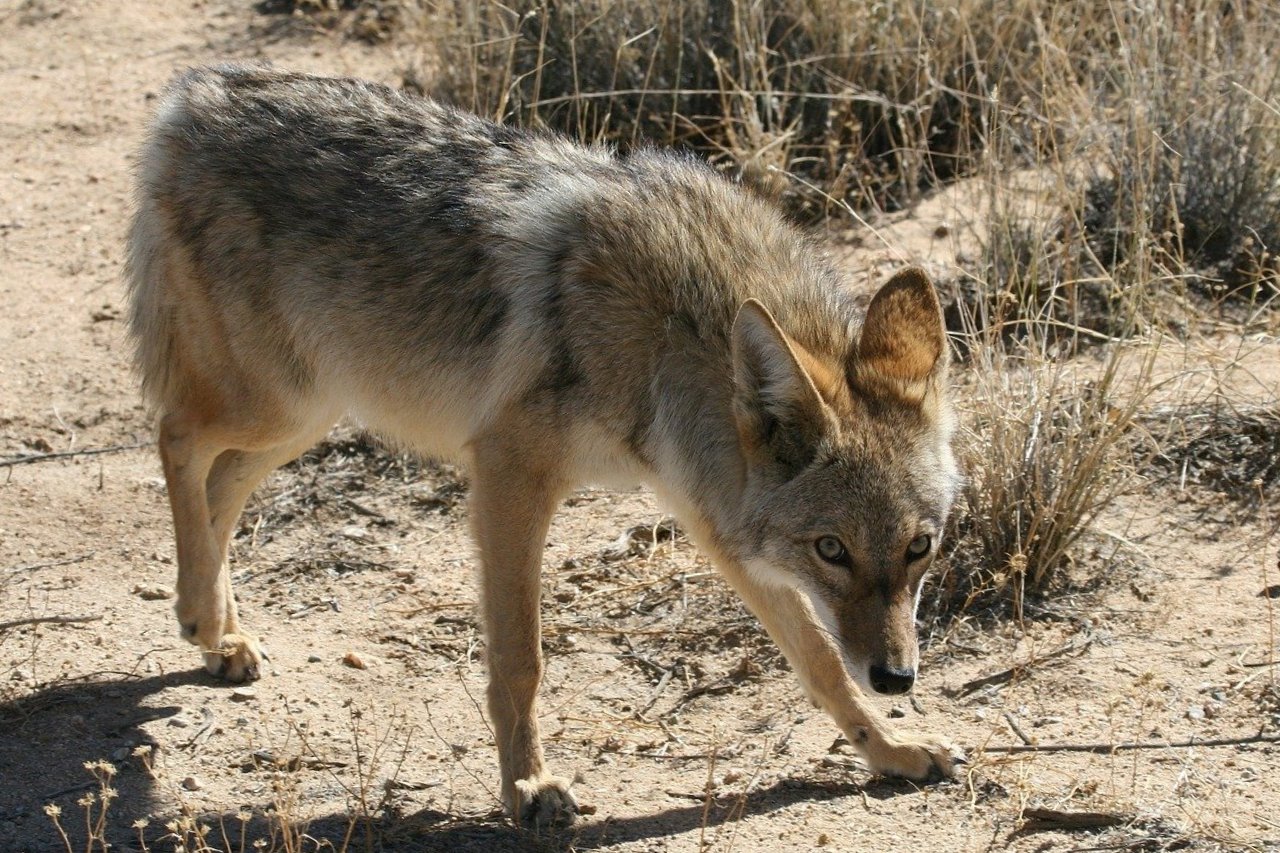- info@pestcontrolwildlife.com
Call us for help in your town
America's Wildlife Experts
Coyotes

Coyotes are a species of animal that humans have tried really hard to control the populations of, to no avail. With coyotes in particular, culling group numbers just seems to result in faster reproduction and an even stronger pack emerging, but there are ways in which you can stop them, as well as other nuisance wildlife, causing problems for your home or business.
Coyote Appearance & Size
Coyote males are bigger than females. The former can reach 40-50 pounds in weight, with the latter reaching just 30-40 pounds. Coyotes can look a little similar to foxes too, particularly smaller or younger ones, though they don't tend to have the red coloring that the red fox can boast of.
Those living in sandy regions have more sandy-colored markings, and mountainous-dwelling coyotes usually have darker fur.
Coyote Lifespan
Coyotes rarely live for longer than 3 years in the wild, but in captivity and other ideal-condition situations, the animal can actually live for 10 or 15 years or more.
Coyote pairs form partnerships during mating in spring, with males and females coming together in a ‘courtship' of sorts. This courtship can start happening a few months before the actual act of mating occurs. Once the bond is formed, the pair will stay in a monogamous relationship.
Females are pregnant for 8 weeks before giving birth to up to 10 pups, with an average of 6. Both parents will raise the young for the rest of spring and summer, often with the help of females who were unsuccessful in their own quests to reproduce. The youngsters are capable of leaving to start their own lives by mid-to-late fall, but they often stay with their parental groups for the first winter. Most young coyotes start breeding at around 2 years of age.
Coyote Habitat
Once upon a time, you would only see coyotes in territories such as mountainous regions, forested and wooded areas, in open plains, and also desert regions. These days, however, with habitat destruction, coyotes are fast learning how to live right alongside humans. Human-coyote conflicts are more popular now than they ever have been in some of the most populated cities in America, including LA.
Coyotes are lazy in the sense that they would much prefer to find a home than create one. It is more common for the animal to take up residence in the abandoned burrow of another animal than it is for them to dig a burrow of their own; though they are certainly more than capable of doing so.
Coyote Diet
Coyotes, much like other nuisance animals, will eat everything they come across — and that can mean quite the diverse mix of food items. Although they are primarily carnivores, they do actually eat plant-based produce too. Around 10-20% of their diet is thought to be plant-based, and that can rise when other meat-based food items aren't easy to come by.
Coyotes will also eat roadkill, cat and dog food, leftovers thrown out in garbage bags, rats and mice, frogs, insects, snakes, fish, and even deer, if the opportunity presents itself. They are opportunistic feeders, and scavengers, which means they'll eat the bits that other animals, including humans, don't want.

Common Problems
Coyotes rarely attack humans. In fact, they'd much rather run in the opposite direction. Despite that, human-coyote conflicts can arise, and it is not that uncommon for them to get into chicken coops and pet hutches, or attack cats and dogs.
Coyote Prevention Methods
By far the best way to stop nuisance animals such as coyotes from causing problems on your property is to ensure that you're not feeding them. Do not leave pet food outside for your cat or dog, and ensure that pets and other animals are properly secured when they are left outside, especially chickens, rabbits, guinea pigs, etc.
Trash cans should be properly secured. Garbage bags are easily ripped open, and plastic trash cans are easily chewed through, broken, or torn apart. We recommend using a metal trash can, with a lid, and using bungee cords, chains, or thick rope to tie the lid in place. The ties or cords can easily be chewed through, but should last the night and are cheap enough to replace as necessary.
Having a good cleanup of your property is also a very good idea to keep nuisance wildlife out, particularly coyotes. They need protection as they move around, especially during the day, and long grasses, unkempt shrubs, and lots of mess or debris give them everything they need to move around virtually unnoticed. By clearing the space and removing all mess, you're taking away hiding places, potential den entry points, and the ground cover they use to sneak around.
How the Professionals Remove Coyotes
Trapping coyotes can be quite a tricky business, and quite a risky one, too. They are animals known for being aggressive when cornered or threatened, and a bite from either of them could result in nasty wounds, with an added risk of infection.
Professionals often use am assortment of tools for trapping or otherwise removing coyotes from properties, including live cage traps, paw hold traps, and even physical capture. At the same time, they'll modify the property to ensure the creature(s) can't come back, offering recommendations (or doing the work) for fence installation, food removal or protection, and other tweaks.
A few fun facts about coyotes:
1 - Coyotes are actually mostly solitary creatures as adults, though they can often come together to work as a team, alongside family units staying together for protection.
2 - Coyotes have a top speed of 40 mph.
3 - If necessary, coyote males will venture far and wide to search for food, even traveling as many as 50, 80 or 100 miles away from the ‘home' point.


















